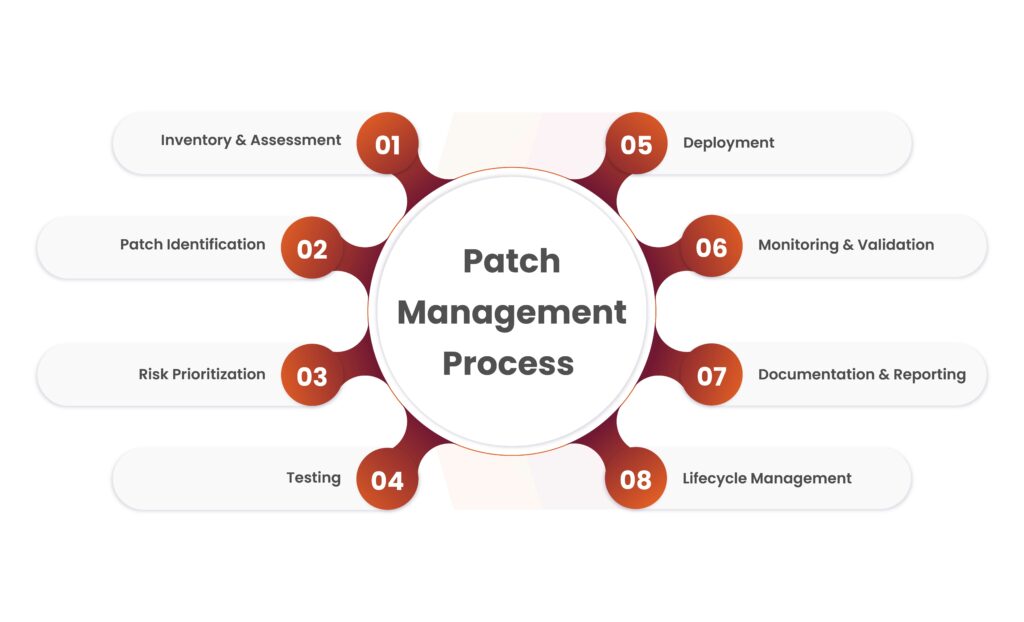
2024-8-20 14:0:22 Author: securityboulevard.com(查看原文) 阅读量:1 收藏
Linux Kernel server patch management is essential for ensuring the security, stability, and performance of your server infrastructure. This comprehensive guide covers everything you need to know, from the basics to advanced strategies for managing patches on Linux servers. Whether you’re an experienced system administrator or just starting out, this guide will provide you with the knowledge and tools to keep your Linux servers secure and up-to-date.
Organizations need efficient patch management practices to ensure timely and consistent patching, crucial for maintaining a secure IT environment. Delaying patches increases the risk of cyberattacks, leaving systems and sensitive data vulnerable.
Recent Linux Kernel Incident
Researchers from Graz University of Technology have introduced a new Linux kernel exploitation technique known as SLUBStick, which allows attackers to elevate limited heap vulnerabilities to arbitrary memory read-and-write capabilities. This technique exploits a timing side-channel in the memory allocator, significantly increasing the success rate of cross-cache attacks to over 99% for commonly used generic caches. SLUBStick has been tested on Linux kernel versions 5.19 and 6.2, utilizing various security flaws such as double-free and use-after-free vulnerabilities, enabling privilege escalation to root without authentication and facilitating container escapes. The method effectively circumvents existing kernel defenses like Kernel Address Space Layout Randomization (KASLR) and Supervisor Mode Access Prevention (SMAP), highlighting the ongoing challenges in securing the Linux kernel against sophisticated attacks.
Patch Management for Linux Kernel
If you’re looking to deepen your understanding of Linux patch management, you’ve found the right resource. Linux patch management involves managing patches for applications running on Linux systems. This process includes scanning your Linux endpoints to identify missing patches, downloading them from vendor sites, and deploying them to the appropriate machines. Effective patch management enhances system performance and helps maintain a secure, productive environment. While Linux patching can be complex, the right tool can simplify the process. ManageEngine’s comprehensive solution, Patch Manager Plus, addresses compatibility issues and provides robust support for Linux patch management.

Best Practices for Linux Kernel Patch Management
Below are the best practices for Linux patch management:
Create Patch Management Policy
Document your policies with clear, concise instructions and include a plan for change management to maintain control over the documents. The policies should outline IT’s approach to patch management, including setting supply chain guidelines for sourcing patches, tracking security advisories and threat intelligence to prioritize patches and remediations, and establishing testing procedures in non-production environments. Additionally, the policies should include guidelines for regular system backups, deployment timelines, and a consistent patching schedule. Implement least privilege computing to ensure services and users have only the necessary permissions, and clearly define roles and responsibilities.
Automation of Patching Process
Leverage automation and configuration management tools or a unified endpoint management (UEM) service to streamline the patching process. Automation minimizes human error, ensures patches are consistently applied across all endpoints, and provides notifications if patches fail to deploy.
Keep a Detailed Inventory of Systems and Software
Maintaining an asset inventory is crucial for identifying and managing all hardware and software resources. This step is vital when implementing vulnerability scanning, as it helps Linux admins avoid compatibility issues and conflicts by understanding package dependencies. Some patches may have specific requirements or conflicts with other software, making this awareness essential.
Tracking commercial software licenses is also important to ensure access to the latest patches and maintain up-to-date, supported versions. These practices help establish controls to prevent security and legal issues. A comprehensive asset inventory simplifies software management and is essential for effective incident response forensics, aiding in assessing the impact, root cause, and available mitigations in the event of a breach.
Benefits of Effective Linux Kernel Patch Management
Effective Linux Kernel Patch Management offers several key benefits, including:
Reduce Risk of Cyber Attacks and Data Breaches
Patching resources minimizes your attack surface by addressing known vulnerabilities, thereby preventing potential exploits and attacks within your networks. By thwarting attacks, you reduce the risk of data breaches, unauthorized access, and other security incidents that could result in costly recovery efforts.
Improvement in System Performance and Stability
Patching helps maintain system availability, and operational stability and reduces unplanned downtime that could disrupt business operations and lead to financial losses. Consistent system configurations also help lower the total cost of ownership for Linux systems.
Adherence to Compliance Standards
An increasing number of SMEs must comply with regulatory standards like the Payment Card Industry Data Security Standard (PCI DSS) or General Data Protection Regulation (GDPR). Effective patch management is essential for meeting these requirements and shows that your organization is proactively securing endpoints and protecting sensitive data.
Book a Free Consultation with our Cyber Security Experts

How to Automate Linux Patch Management?
When managing thin clients, automating Linux patch management is crucial for maintaining system security and efficiency. Start by selecting a patch management tool that can automate patching across your Linux distributions, ensuring compatibility with your thin client environment. While manual methods using package managers like apt, dnf, and yum can handle installations and updates, they may require significant effort to maintain automation scripts, manage dependencies, and implement error handling and roll-back procedures. Thin clients, often deployed in large numbers, benefit greatly from automated solutions that reduce manual intervention. IT managers should be particularly cautious about poorly documented processes, as these can pose significant risks during organizational changes, potentially leading to disruptions in the thin client infrastructure.
Conclusion
Effective Linux kernel patch management is essential for safeguarding your systems against emerging threats and vulnerabilities, as demonstrated by recent exploits like SLUBStick. By establishing clear policies, automating the patching process, and maintaining a detailed inventory of your assets, you can ensure your Linux infrastructure remains secure, stable, and compliant with regulatory standards. Implementing these best practices not only reduces the risk of cyberattacks and data breaches but also enhances system performance and operational efficiency. Whether managing servers or thin clients, leveraging the right tools and strategies will help maintain a robust and resilient IT environment.
As a CERT-In empanelled organization, Kratikal is equipped to enhance your understanding of potential risks. Our manual and automated Vulnerability Assessment and Penetration Testing (VAPT) services proficiently discover, detect, and assess vulnerabilities within your IT infrastructure. Additionally, Kratikal provides comprehensive security auditing services to ensure compliance with various regulations, including ISO/IEC 27001, GDPR, PCI DSS, and more, assisting your business in adhering to legal requirements set forth by diverse governments.
FAQs
- How to check the patching status in Linux?
To verify if a security patch is installed on Linux, you can check the log files in the /var/log directory or use the command rpm -qa –last to view the most recent updates that have been installed.
- How to install Linux patching?
To install a specific version of the ‘patch’ command using a package manager, you can utilize either the ‘apt-get’ or ‘yum’ command with the desired version number. For example, to install version 2.7.6 of the ‘patch’ command with APT, you would use the following command: sudo apt-get install patch=2.7.6.
The post How to Patch your Linux Kernel before it gets exploited? appeared first on Kratikal Blogs.
*** This is a Security Bloggers Network syndicated blog from Kratikal Blogs authored by Shikha Dhingra. Read the original post at: https://kratikal.com/blog/how-to-patch-your-linux-kernel-before-it-gets-exploited/
如有侵权请联系:admin#unsafe.sh